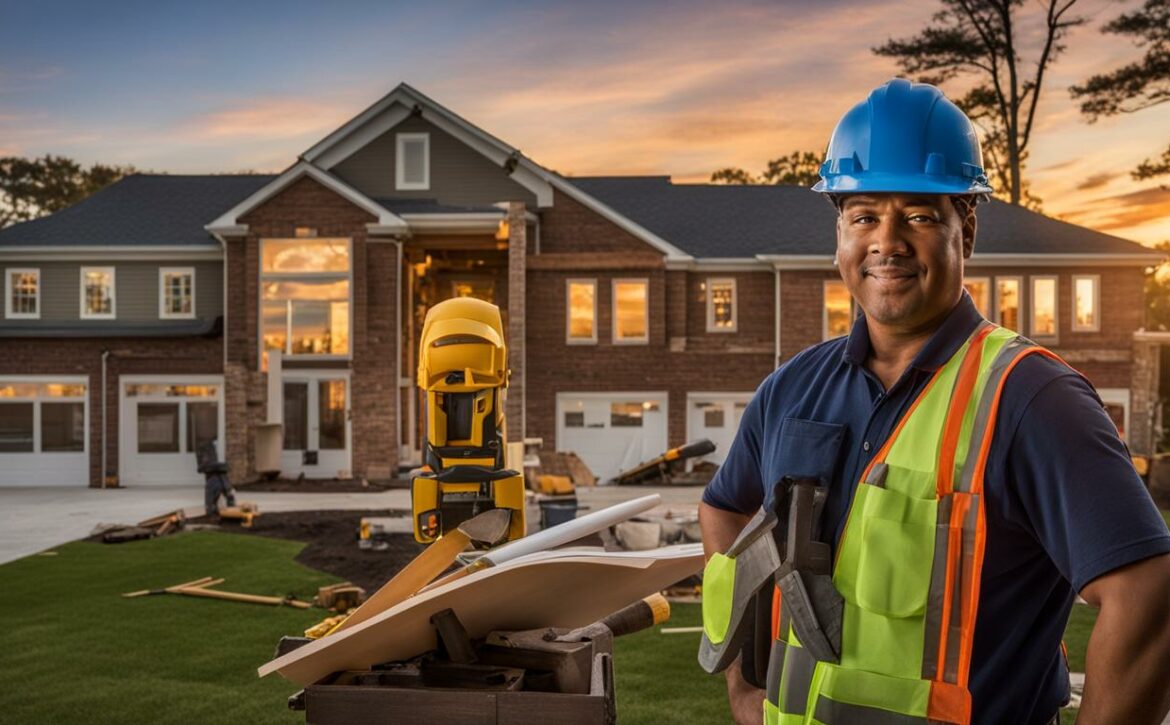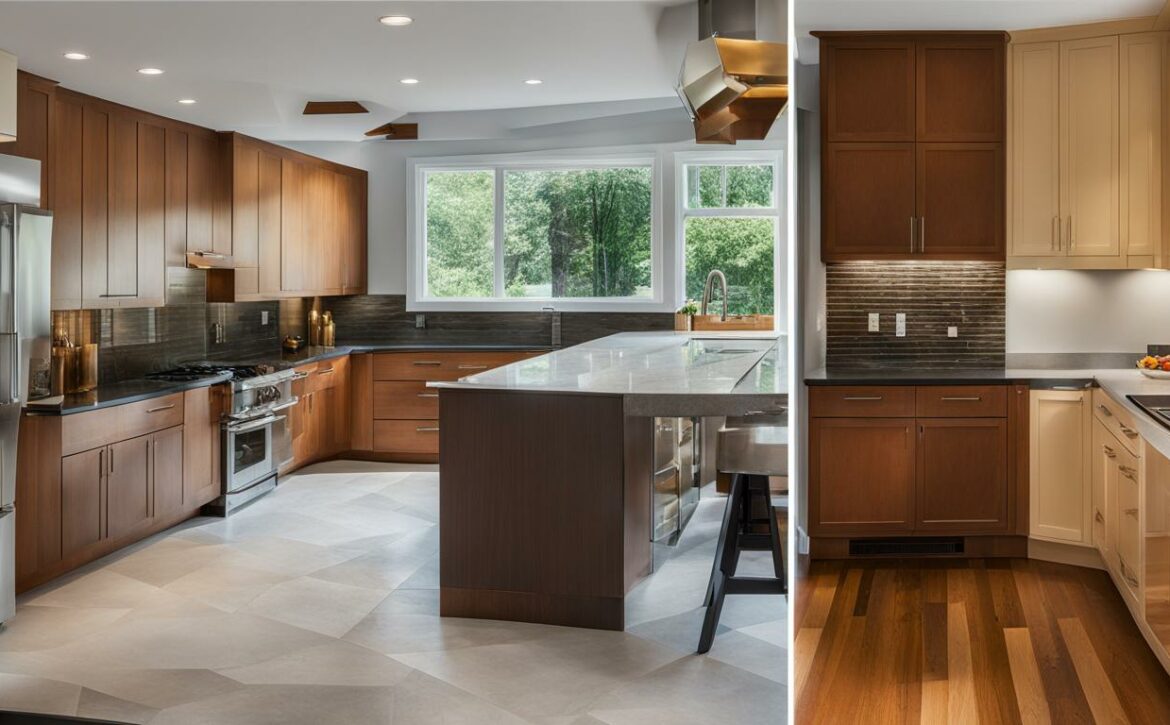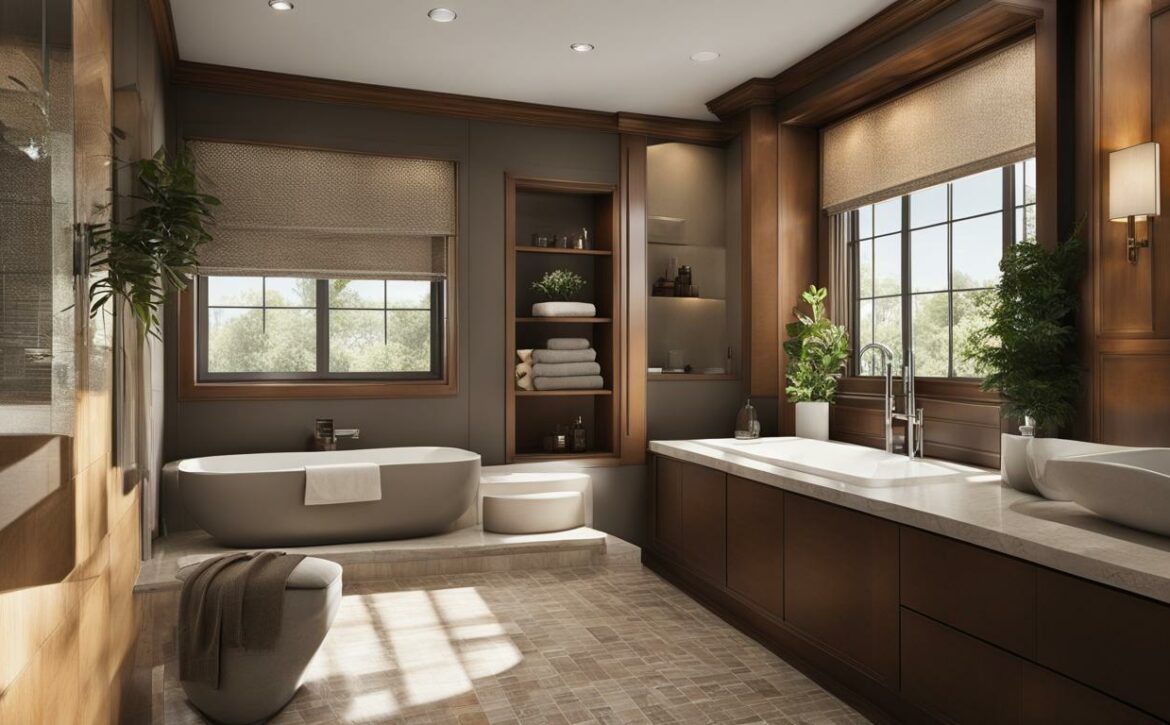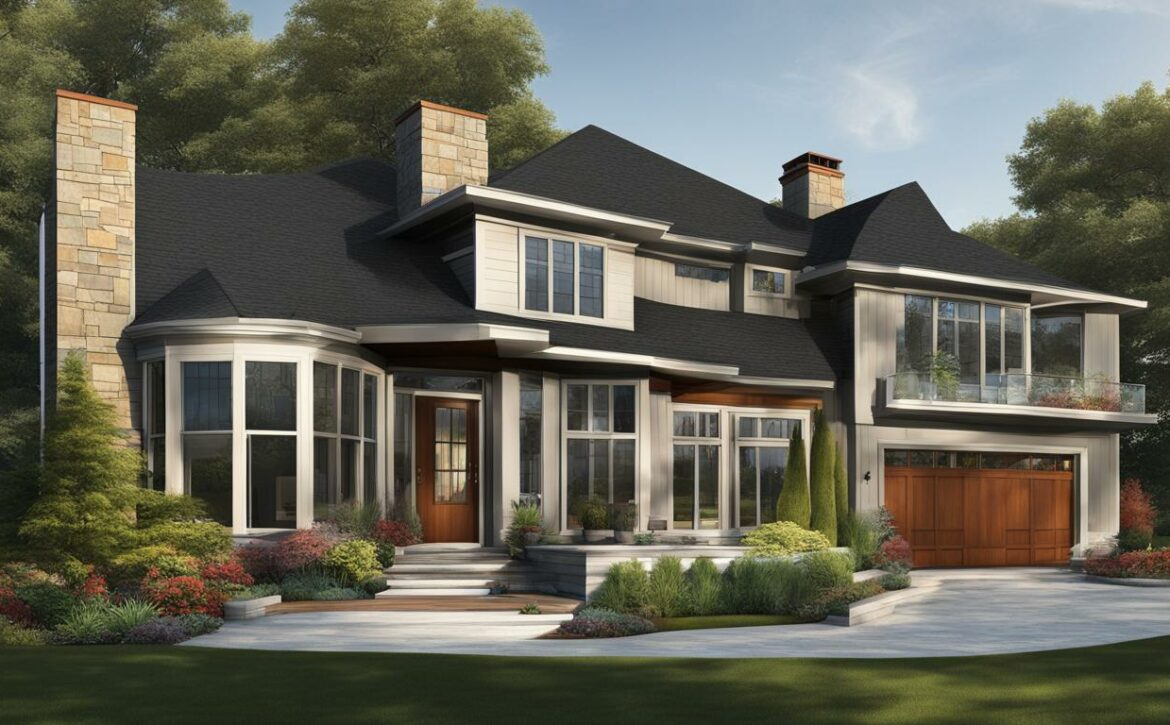Long Island Home Advisors: Your Guide to Local Home Improvement
Long Island Home Advisors is your go-to source for comprehensive local home improvement solutions in Bayport, NY. With over 20 years of industry expertise, our trusted home remodeling professionals provide a wide range of Long Island home renovation services. From bathroom remodels to complex roofing projects, you can depend on our team for quality work and reliable service. Ready to upgrade your home in line with your vision? Reach out today at (631) 696-7279 and let our professional home improvement services transform your living space.
Key Takeaways
- Long Island Home Advisors offers extensive local home improvement services in Bayport, NY, covering a wide range of projects.
- With over 20 years of experience, our team consists of trusted home remodeling professionals who provide quality work and reliable service.
- From bathroom renovations to roofing projects, Long Island Home Advisors can cater to your home improvement needs.
- Contact us at (631) 696-7279 to discuss your Long Island home renovation plans and receive expert guidance.
- Partner with us for a hassle-free and successful home improvement experience that enhances your residential living space.
Understanding the Cost of Roofing on Long Island
Roofing costs in Long Island can range from $8,500 to $14,300, variable factors such as shingle type, labor rates, and location significantly impacting the budget. Property owners must consider these factors for an accurate projection of their roofing expenses. The final cost of roofing is affected by several elements, including the roof’s complexity, pitch, size, and any additional characteristics like skylights or chimneys. Long Island residents should carefully evaluate each aspect to estimate the financial scope of their roofing projects accurately.
The Impact of Roofing Materials and Labor on Your Budget
When examining the cost of roofing and planning a home renovation budget, it’s essential to consider the price of various roofing materials and labor costs. These two factors play a significant role in determining the overall roofing project costs for home improvements on Long Island.
| Roofing Material | Average Cost per Square | Estimated Labor Cost per Square |
|---|---|---|
| Asphalt Shingles | $100 – $200 | $70 – $130 |
| Metal Roofing | $300 – $1200 | $100 – $500 |
| Slate Roofing | $600 – $1,500 | $200 – $800 |
Identifying the Factors That Drive Up Roofing Costs
Beyond materials and labor, it’s crucial to be aware of roofing price factors to effectively manage your home renovation budget. Some common aspects influencing the overall cost of your Long Island roofing project include:
- Roof size: Larger roofs require more materials and labor, resulting in higher costs.
- Roof complexity: Complex roof designs with multiple angles, valleys, and penetrations demand more labor and materials, increasing the price.
- Roof pitch: Steeper roofs often require specialized equipment and safety measures, driving up labor costs.
- Additional features: Installing skylights, chimneys, or other architectural features can raise the overall cost.
- Location: The cost of labor and materials can vary depending on your property’s location on Long Island.
Partnering with trusted home advisors can help you navigate these factors and plan your budget accordingly. Their local expertise will ensure you make informed decisions to complete a successful and cost-effective roofing project on Long Island.
Why Insurance Coverage Matters for Your Roofing Contractor
Securing a roofing contractor with sufficient insurance on Long Island is fundamental to protect homeowners from potential legal and financial repercussions. Adequate coverage, including liability and workers’ compensation, shields property owners during unforeseen accidents and ensures a trustworthy roofing solution. An uninsured or underinsured contractor may leave homeowners facing significant liabilities in the event of damages or injuries occurring during the roofing process.
Homeowners should prioritize research to identify a Long Island professional roofing team that carries the appropriate roofing contractor insurance, ensuring financial protection and peace of mind. These insurance types provide coverage for varying aspects of the roofing process:
- General Liability Insurance: Protects against third-party bodily injury and property damage claims that may arise from the contractor’s operations.
- Workers’ Compensation Insurance: Covers medical expenses and lost wages for workers injured on the job, reducing financial and legal burdens on the property owner.
Furthermore, insurance coverage reinforces the credibility of the roofing contractor and attests to their long-term commitment to providing reliable residential construction services. By choosing an insured contractor, homeowners can effectively safeguard against potential homeowner liability and ensure the success of their roofing project.
Investing in roofing contractor insurance is a vital component for Long Island homeowners to achieve a stress-free and successful roofing project. Always verify a contractor’s insurance coverage to avoid any financial and legal setbacks.
To verify your chosen contractor’s insurance coverage, ask for a Certificate of Insurance (COI). The COI will include crucial information, such as:
- Insurance provider’s name
- Policy number
- Types of coverage
- Policy expiration date
Collaborating with a Long Island professional roofing team that places importance on insurance coverage allows homeowners to proceed with their roofing endeavours confidently, knowing they are protected from unexpected financial liabilities and legal complications.
Evaluating Roofing Squares and Measurement Units
Understanding the concept of roofing squares and measurement units is crucial for homeowners in Long Island planning a roof replacement or repair project. By gaining insight into how roofing costs are estimated based on these units, they can make informed decisions and obtain accurate quotes from roofing contractors.
Roofing estimates in Long Island are often based on ‘squares,’ a unit equaling 100 square feet. Accurate measurement is critical for cost estimation, especially considering the average price per square ranges from $500 to $700 on the island. One of the responsibilities of a professional roofing contractor is to provide these measurements to homeowners for an accurate understanding of the project’s scope.
Deciphering the Complexities of Roofing Area Estimations
In the context of roofing projects, the term ‘square’ serves as a standard measurement unit, simplifying the overall estimation process. However, calculating roof squares can be challenging due to various factors influencing the roof’s area. Complicated roof shapes, pitches, and unique features such as dormers or skylights can all impact the overall size and area of the roof.
Table: Roofing Square Measurement Examples on Long Island
| Roof Size (sq.ft) | Roofing Squares | Avg Cost per Unit ($500 – $700) | Total Costs |
|---|---|---|---|
| 1200 | 12 | $500 – $700 | $6,000 – $8,400 |
| 1800 | 18 | $500 – $700 | $9,000 – $12,600 |
| 2400 | 24 | $500 – $700 | $12,000 – $16,800 |
Although calculating roofing squares may prove challenging, having a basic understanding of the measurement units can help homeowners in Long Island when requesting quotes from roofing professionals. By grasping the factors that influence the total roof area estimation, they can ensure a cost-effective and well-planned roofing project.
Navigating Your Home Renovation with Local Experts
Renovating your home can feel like navigating a maze without the right expertise and guidance. Fortunately, working with the Long Island home experts can equip homeowners with the knowledge and confidence needed to make smart decisions throughout the renovation process.
These top-rated home advisors provide a broad array of services that cater to every aspect of home renovation, from project planning to flawless execution. They offer valuable home renovation tips and work closely with clients, ensuring their satisfaction. Let’s explore some key considerations for a successful home renovation experience.
Long Island Home Advisors – your reliable partner for a seamless home renovation journey.
- Set clear goals: Determine the objectives of your renovation project, such as increasing property value, improving energy efficiency, or enhancing functionality. Knowing your priorities helps ensure a well-directed and successful project.
- Consult with professionals: Rely on the expertise of local home experts to identify the best contractors for your needs. They can help you find local home contractors that align with your budget and project requirements.
- Establish a realistic budget: Determine the costs of materials, labor, and other necessary expenses and factor in some contingency funds to cover unforeseen expenses. Long Island home experts can assist you with budget estimation and allocation.
- Manage timelines effectively: Home renovation projects can experience delays due to unforeseen factors. Long Island home experts can help you develop a feasible schedule and keep the project on track.
- Secure permits and approvals: Be aware of the legal requirements for home renovation projects, such as building codes, zoning ordinances, and permits. Long Island home advisors can guide you through this process and ensure compliance with local regulations.
In conclusion, Long Island home experts play a crucial role in making the renovation experience as smooth and rewarding as possible. Their expertise and assistance provide homeowners with the confidence to successfully navigate the renovation landscape.
Are you ready to start your home renovation project with the guidance of Long Island home experts? Call (631) 696-7279 to discuss your project and receive quality work and reliable service from top-rated home advisors.
Choosing the Right Roofing Material for Your Home
When it comes to Long Island home improvement, selecting the appropriate roofing material can greatly impact the aesthetic appeal and overall project budget. Homeowners should carefully assess the available options to choose a roofing solution that aligns with their needs and preferences. This section provides a comparison of popular materials like asphalt shingles, metal roofing, and premium roofing materials.
Comparing Asphalt Shingles, Metal, and Premium Options
| Roofing Material | Cost Range (per square) | Advantages | Disadvantages |
|---|---|---|---|
| Asphalt Shingles | $500 – $800 |
|
|
| Metal Roofing | $800 – $1,500 |
|
|
| Premium Roofing Materials (Slate, Wood, Clay) | $1,000 – $4,000+ |
|
|
When weighing your roofing material selection, consider factors such as your budget, climate, and your home’s structure. To ensure a well-informed decision, consult with Long Island home improvement professionals who can offer personalized recommendations based on their expertise.
Unlocking Your Home Equity for Home Improvements
Home equity can be a valuable resource for homeowners seeking to finance home upgrades and Long Island home transformations. By tapping into this equity, homeowners can reinvest in their properties and fund significant financing home improvements projects. However, utilizing home equity should be approached with caution and a thorough understanding of the implications on Long Island home values and personal finances.
There are several ways to use home equity for financing home improvements, including:
- Home Equity Loan
- Home Equity Line of Credit (HELOC)
- Cash-Out Refinance
“Homeowners should carefully consider the pros and cons of each financing option to ensure they are making the best decision for their unique situation.”
https://www.youtube.com/watch?v=QZlexeECVWw
Before using home equity for renovations, Long Island homeowners should keep in mind the following factors:
- Assess the current market value of the property and the amount of equity available.
- Identify the specific home improvements needed and their estimated costs.
- Compare different financing options, considering interest rates, fees, and repayment terms.
- Understand the impact of debt on their personal financial situation and future goals.
| Financing Option | Pros | Cons |
|---|---|---|
| Home Equity Loan |
|
|
| Home Equity Line of Credit (HELOC) |
|
|
| Cash-Out Refinance |
|
|
In conclusion, using home equity to support home improvements can be a smart financial decision for Long Island homeowners with a clear understanding of the associated risks and benefits. By approaching this process cautiously and comparing available options, homeowners can successfully transform their homes while optimizing their financial investments.
Financing Options: HELOC vs. Home Equity Loan
When it comes to funding a Long Island home renovation, homeowners often explore financing options like a HELOC or a home equity loan. Both options utilize the equity in your home to secure funds for home improvements, but they differ in structure and functionality. Understanding their unique features and implications is essential for making an informed decision.
The Benefits and Drawbacks of Utilizing Home Equity
Home Equity Loans offer a lump sum payment upfront, allowing homeowners to have a predetermined budget for their renovation projects. Once the loan is disbursed, repayment begins immediately with fixed monthly payments. Home equity loans typically come with fixed interest rates, providing predictability for borrowers. However, they may have higher closing costs, and the loan often requires a longer repayment term, increasing the overall cost of interest over time.
On the other hand, a Home Equity Line of Credit (HELOC) functions more like a credit card, providing a revolving line of credit based on your home’s equity. HELOCs offer flexibility for homeowners, allowing them to borrow and repay funds as needed throughout the draw period. While HELOCs may have variable interest rates, contributing to fluctuating monthly payments, they often come with lower closing costs and interest-only payment options during the draw period.
| Home Equity Loan | HELOC | |
|---|---|---|
| Distribution | Lump sum | Revolving credit line |
| Interest Rate | Fixed | Variable |
| Repayment | Immediate fixed monthly payments | Flexible payments during draw period |
| Closing Costs | Higher | Lower |
Deciding between a HELOC and a home equity loan for your Long Island home renovation ultimately depends on various factors, including your financial situation, renovation budget, and desired repayment method. Before proceeding, it’s essential to evaluate interest rates, tax deduction eligibility, and repayment terms to determine the most suitable financing option for your project.
Practical Tips for Selecting Top-Rated Home Advisors
Getting the most value from your Long Island renovations heavily relies on choosing trusted home remodeling professionals who guarantee quality services and project success. Presenting practical advice, this guide will help ensure you select top-rated home experts for your next endeavor.
Professional Home Improvement Services: Ensuring Quality and Reliability
When searching for the ideal Long Island home services, prioritize professionals who:
- Offer comprehensive insurance coverage, protecting homeowners from potential liability during projects.
- Possess relevant certification, confirming adherence to the latest industry standards and practices.
- Boast considerable experience in the field, emphasizing their capabilities and familiarity with Long Island renovations.
Thoughtful selection lays the foundation for a rewarding partnership with a home advisor, establishing a framework for renovation success.
The Importance of Home Advisor Reviews and Testimonials
Home advisor reviews help paint a clear picture of your prospective remodeling professional’s relationships with past clients and their overall work quality. Furthermore, customer feedback and testimonials showcase the company’s commitment to client satisfaction, delivering vital insights into their reputation and standard of service. Utilize the following guidelines to interpret and assess customer reviews:
- Verify that the reviews are authentic by checking for genuine feedback from real clients.
- Identify any patterns or recurring themes in the comments, as such trends can symbolize strengths or weaknesses of the contractor.
- Analyze multiple reviews to attain a complete understanding of the service provider’s abilities, professionalism, and reliability.
Examining home advisor reviews before hiring ensures your investment in the project yields its full potential, with your chosen contractor capable of delivering a seamless Long Island home renovation experience.
Home Renovation Contractors: The Pillars of Home Transformation
Home renovation contractors are essential for successfully transforming your Long Island property into the dream living space you deserve. Possessing extensive experience and knowledge, these trusted remodeling professionals are the backbone of any home renovation project, seamlessly transforming design plans into reality.
With a variety of residential construction services available in Long Island, it can be challenging to determine the right contractor for your specific needs. To streamline your decision-making process, consider the following key qualities when choosing your contractor.
- Relevant experience
- Proven track record of success
- Reliable communication channels
- High-quality craftsmanship
- Transparent and detailed quotes
- Valid licenses and certifications
- Positive customer reviews and testimonials
Selecting a team of home renovation contractors who possess these distinct attributes will ensure that your Long Island home transformation is in the best hands possible. An experienced contractor will offer valuable guidance throughout the entire renovation process and provide reliable execution, ensuring your final result exceeds your expectations.
“The secret behind a successful home transformation lies in partnering with a skilled and trustworthy contractor who can bring your vision to life.”
In conclusion, your Long Island home transformation deserves the expertise of established home renovation contractors. By carefully vetting potential partners and prioritizing the key qualities mentioned above, you can trust that your investment in home renovation will yield outstanding, lasting results.
Residential Construction Services: Beyond the Blueprint
Long Island residential construction services extend further than just providing home blueprint designs. They involve a comprehensive understanding of project management, skilled labor, and ensuring adherence to building standards and regulations. Professional construction management plays a vital role in transforming home concepts into reality, elevating Long Island home projects to the next level.
To successfully execute a home project, construction companies must employ a holistic approach that integrates various aspects of the renovation process. This starts with a solid home blueprint design, followed by careful project planning and execution, and ends with rigorous quality inspection.
- Home Blueprint Design: The foundation of any successful project lies in its design. A comprehensive blueprint ensures that every detail is thoroughly planned and coordinated.
- Project Planning: Effective planning is crucial for setting realistic timelines, managing resources, and allocating tasks efficiently. It serves as the backbone that ensures seamless execution of the home project.
- Project Execution: Professional construction management is vital for bringing the blueprint to life. Skilled labor, top-grade materials, and adherence to safety regulations are essential components of successful project execution.
- Quality Inspection: The final step is quality assurance, where the residential construction team reviews the completed project to ensure that it meets industry standards and client expectations.
Long Island residential construction services offer an all-inclusive solution for all your home project needs, taking you from the initial blueprint design through to the completed structure.
| Home Blueprint Design | Project Planning | Project Execution | Quality Inspection |
|---|---|---|---|
| Foundation of the project | Setting realistic timelines | Bringing the blueprint to life | Verifying industry standards |
| Coordinated and detailed planning | Managing resources efficiently | Skilled labor and top-grade materials | Ensuring client satisfaction |
Entrusting your Long Island home projects to experienced residential construction service providers will ensure that the final outcome aligns with your vision. From concept to completion, your project will receive expert guidance and a solid blueprint design for a seamless and satisfactory experience.
Partnering with Reliable Home Repair Specialists
Teaming up with credible home repair specialists ensures Long Island homeowners receive high-quality service. From small fixes to extensive repairs, these experts deliver efficiency and reliability, maintaining your home’s integrity and value. Long Island improvements carried out by home maintenance experts not only elevate the appearance and functionality of your living space but also safeguard it for years to come.
Choosing the right reliable home services provider is essential for achieving the desired outcome for your home improvement projects. Here are some key factors to consider when selecting home repair specialists in Long Island:
- Reputation and customer testimonials
- Years of experience in the industry
- Insurance coverage and certifications
- Flexibility in services offered
- Transparency in pricing and project timelines
When you partner with dependable professionals, you can rest assured that your investment in home maintenance and repair work is in good hands.
“Long Island Home Advisors assisted us in completely redesigning and upgrading our outdated kitchen. Their home repair specialists were punctual, professional, and highly skilled, providing reliable service throughout the entire project.” – Satisfied Long Island homeowner
For homeowners seeking reputable home maintenance experts, consider these popular services for Long Island improvements:
| Service | Description |
|---|---|
| Plumbing Repairs | Addressing leaks, clogs, and other common plumbing issues to prevent costly damages |
| Electrical Repairs | Inspecting and repairing electrical systems, sockets, and wiring for safety and reliability |
| HVAC Services | Maintaining heating and cooling systems for optimal energy efficiency and indoor comfort |
| Roofing Repairs and Replacement | Preserving long-lasting roof performance through routine inspection, maintenance, and repair |
| Home Remodeling and Extension | Improving living spaces to accommodate changing lifestyles, preferences, and growing families |
In conclusion, selecting reputable and trustworthy home repair specialists for your Long Island improvements not only ensures the job gets done correctly but also provides peace of mind for years to come. Experience the difference that reliable home services can make – invest in your property’s long-term value and appeal today.
Conclusion
In conclusion, Long Island Home Advisors are essential partners in orchestrating successful home improvements, providing the necessary expertise, resources, and assurance throughout the renovation journey. By utilizing their services, homeowners in Long Island can confidently undertake their home renovations, knowing that they are working with experienced professionals committed to turning visions into reality.
With over 20 years of experience in the industry, Long Island Home Advisors have earned a reputation for delivering top-notch home advisor services in Bayport, NY, and beyond. They are well-equipped to handle any project, be it bathroom remodeling, complex roofing, or any other home improvement undertaking. Through their diligence and expertise, they play a pivotal role in helping homeowners navigate the often daunting realm of home renovations.
Ultimately, the goal of Long Island Home Advisors is to ensure the home renovation completion that aligns with the homeowners’ aspirations, resulting in an enhanced residential living space. By entrusting Long Island Home Advisors with their renovation projects, homeowners can expect to not only benefit from quality services but also gain invaluable guidance through every step of the renovation process.
FAQ
What services do Long Island Home Advisors provide?
Long Island Home Advisors offer comprehensive home improvement solutions, including bathroom remodels, roofing projects, and various home upgrades. They have over 20 years of industry expertise and are committed to providing quality work and dependable service.
How do I estimate the cost of roofing on Long Island?
Roofing costs in Long Island can range from $8,500 to $14,300, variable factors such as shingle type, labor rates, and location significantly impacting the budget. Property owners must consider the roof’s complexity, pitch, size, and any additional characteristics like skylights or chimneys for an accurate projection of their roofing expenses.
Why is insurance coverage important for a roofing contractor?
Securing a roofing contractor with sufficient insurance on Long Island is fundamental to protect homeowners from potential legal and financial repercussions. Adequate coverage, including liability and workers’ compensation, shields property owners during unforeseen accidents and ensures a trustworthy roofing solution.
What are roofing squares and why are they important for cost estimation?
Roofing estimates in Long Island are often based on ‘squares,’ a unit equaling 100 square feet. Accurate measurement is critical for cost estimation, especially considering the average price per square ranges from $500 to $700 on the island.
How can I find local home contractors and expert advisors in Long Island?
Collaborating with Long Island Home Advisors equips homeowners with the expertise necessary to efficiently navigate the renovation landscape. Their broad array of services caters to all aspects of home enhancement, including meticulous planning and execution.
How do I choose the right roofing material for my home?
Long Island residents deciding on roofing materials can choose from affordable asphalt shingles, ranging from $500 to $800 per square, durable metal options, or premium materials like slate, which carry a higher cost. Choosing the right material affects both aesthetics and the total project budget.
How can I use home equity to finance my home improvements?
Home equity can serve as a financial means for renovations, allowing owners to reinvest in their properties. However, tapping into equity should be approached with caution and a thorough understanding of the implications on Long Island home values and personal finances.
What is the difference between a HELOC and a Home Equity Loan?
Home equity loans offer a lump sum that requires immediate repayment, while HELOCs provide flexible credit lines for Long Island homeowners. Deciding between these options demands an evaluation of interest rates, tax deduction eligibility, and repayment terms.
How do I select the best home advisor for my home improvement project?
Selecting top-rated home advisors in Long Island requires validation of their insurance coverage, certifications, experience, and customer satisfaction through reviews and testimonials, ensuring quality services and project success.
Why are home advisor reviews and testimonials important?
Reviews and testimonials provide insight into the reliability and quality of Long Island home advisors. Potential clients should research and consider these valuable resources for informed decision-making when hiring professionals for home remodeling projects.
What role do home renovation contractors play in home transformations?
Home renovation contractors on Long Island are crucial for turning renovation plans into reality, offering expert guidance and execution. They are the backbone of any home transformation endeavor, integrating innovative ideas and dependable craftsmanship.
What do residential construction services entail on Long Island?
Residential construction services in Long Island move beyond simple designs and blueprints, encompassing comprehensive management, skilled execution, and adherence to building standards, ensuring projects transform from concepts to completed structures.
Why is it important to partner with reliable home repair specialists?
Teaming up with credible home repair specialists ensures Long Island homeowners receive high-quality service. From small fixes to extensive repairs, these experts deliver efficiency and reliability, maintaining your home’s integrity and value.











